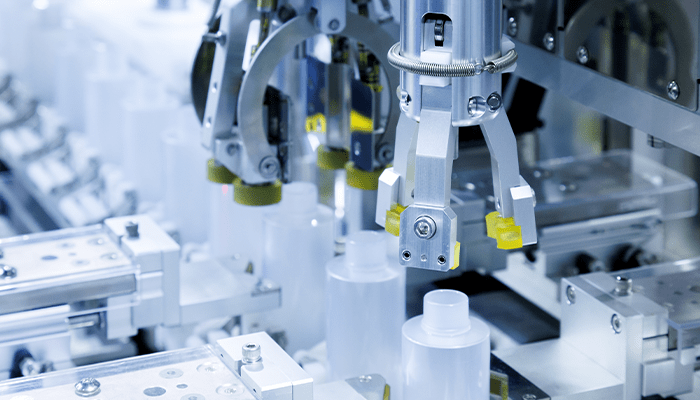
ESG and the Manufacturing Industry
Environmental, Social, and Governance (ESG) adoption has spread across many industries, with the financial services, energy, and consumer goods sectors among the earliest to embrace these principles. These industries were often under the most pressure from stakeholders, including investors, regulators, and consumers, to address environmental, social, and governance issues.
As ESG has gained prominence, its adoption has expanded across virtually all sectors, with companies recognizing the value of sustainable and responsible business practices. The ESG criteria have increasingly influenced the manufacturing industry over the past few years, impacting various aspects of manufacturing operations, from supply chain management to investor relations and regulatory compliance. Here are several ways ESG has affected the manufacturing sector:
Sustainability and Environmental Impact
- Resource Efficiency: Manufacturers have reduced waste, reduced carbon emissions, and optimized resource usage by focusing on renewable energy, reducing water consumption, and minimizing material waste throughout their value stream.
- Regulatory Compliance: Governments and international bodies have implemented stricter regulatory requirements for emissions, waste management, and sustainable sourcing. Manufacturers have found the need to comply with these regulations or face penalties.
- Product Design: ESG principles encourage the design of more sustainable products, such as those that are easier to recycle, use less harmful materials, or are energy efficient. The industry has begun focusing its design efforts on including sustainability as a design requirement throughout the product's lifecycle.
Social Responsibility
- Labor Practices: Although the industry has focused on labor practices driven by labor shortages, ESG continues to bring attention to labor conditions within manufacturing. The sector has included worker safety, fair wages, and human rights as part of its business strategy.
- Community Impact: Manufacturers have become aware and have begun to focus on the need to be a "partner" within their community. They are expected to engage positively with their communities by creating jobs, ensuring safe working conditions, or reducing negative environmental impacts.
- Diversity and Inclusion: Although for many years the manufacturing industry was seen as a gender-specific industry, there has been a focus on becoming a more diverse and inclusive industry that recognizes the need for a diverse workforce, bringing differing perspectives, driving innovation, and improving company culture.
Governance and Transparency
- Risk Management: Governance factors in ESG emphasize better risk management practices, especially concerning environmental impacts and social issues. Manufacturers are expected to have clear policies in place and transparent reporting mechanisms.
- Investor Relations: Investors are increasingly considering ESG factors when making decisions. Companies with strong ESG practices may find it easier to attract investors, while those with poor ESG track records might struggle.
- Supply Chain Transparency: Manufacturers must ensure their supply chains are ethical and sustainable. These requirements are embedded in the ISO9001 standard. Manufacturers who have either obtained or are seeking to obtain ISO certification are required to extend the ethical and sustainable requirements throughout their supply chain.
Market and Consumer Expectations
- Consumer Demand: Consumers demand that products be sustainably made. Companies within the manufacturing sector have had to pivot to a more sustainable product and process or they may lose market share to competitors who align better with consumer values.
- Brand Reputation: ESG factors significantly affect brand reputation. Companies that demonstrate a commitment to ESG principles can enhance their brand image. At the same time, those who fall short may face public backlash or boycotts.
Innovation and Competitiveness
- New Technologies: Driven by consumer requirements, as well as the requirements for ESG, manufacturers are investing in new technologies such as automation, AI, and IoT to improve efficiency and reduce environmental impact. These technologies have become more widely used as manufacturers adopt Industry 4.0 as a business strategy.
- Competitive Advantage: Early adopters of ESG principles often gain a competitive edge. They can capitalize on consumer preferences, attract better talent, and often benefit from incentives for sustainable practices.
Challenges and Opportunities
Implementing ESG practices can have significant upfront costs in the short term, such as adopting cleaner technologies, new reporting systems, or social programs. However, companies have found long-term benefits, such as reduced expenses, greater employee satisfaction, improved relationships within the community, and increased market share. These benefits offset the initial costs of implementation in the long term.
ESG considerations are becoming increasingly critical to strategic decision-making in the manufacturing industry. Companies that proactively address ESG issues are likely to benefit from improved risk management, stronger investor relations, and better alignment with regulatory requirements, ultimately leading to a more sustainable and profitable future.
Featured News & Insights

Manufacturing is a cornerstone of the global economy, encompassing industries that transform raw materials into finished goods. From automotive and aerospace to electronics and consumer products, the...

A recent Forbes story on key topics for manufacturers going into 2025 mentioned several, but the overall theme was the advancement of AI technologies in the manufacturing industry. Following is a...

Innovation is essential for manufacturers – companies must continue to evolve through new product development, production improvement processes, or integrating cutting-edge technologies like...